May 19, 2025 | 13:56 GMT +7
May 19, 2025 | 13:56 GMT +7
Hotline: 0913.378.918
May 19, 2025 | 13:56 GMT +7
Hotline: 0913.378.918
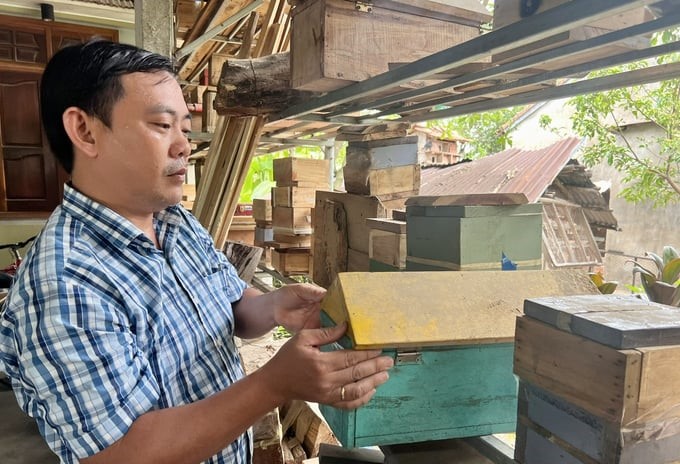
Mr. Nguyen Van Khuong showed the stingless bee-raising boxes. Photo: KS.
Mr. Nguyen Van Khuong said that he started raising stingless bees (scientific name: Meliponini) in 2019. That was the time he happened to go to the house of a lumberjack from the same hometown and was invited to drink Stingless Bee wine. Hearing the strange name of the bee, he was curious to learn more and found out that stingless bee honey was valuable as a medicinal herb, not simply like honey from other bee species.
Seeing this, he started asking for seeds to try raising and found that this bee species is gentle, does not sting people, and does not require much care. From there, he decided to go to the forests in the province, even to Gia Lai province, to find giant stingless bee hives to bring home to raise colonies.
According to Mr. Khuong, stingless bees often build hives in dry, rotten trees in the forest. When he finds a stingless bee hive, he catches the queen bee and puts it in a box, and then the worker bees see that and follow into the hive. Queen bees have a life cycle of about 3–4 years, while worker bees last 60–70 days, but bee colonies continuously reproduce and store honey.
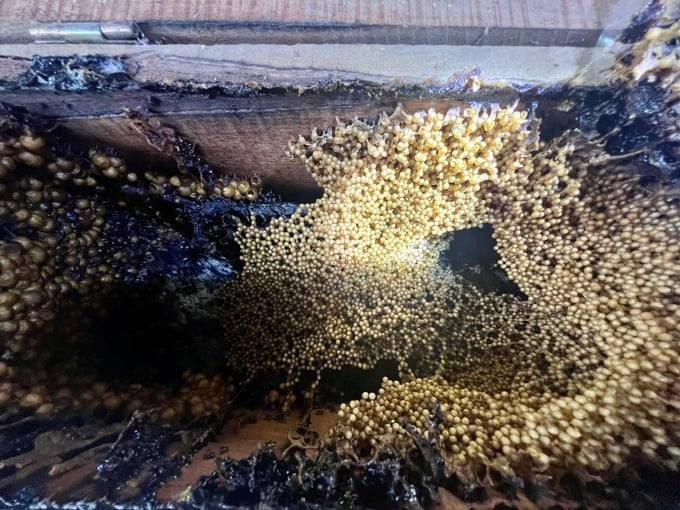
Mr. Khuong said that for each box he raises in nearly a year, he harvests about 250–500 ml of honey. Photo: KS.
"Stingless bees grow and make honey on their own. They do not eat sugar but only suck the pistils of flowers, so the honey is natural and pure. Stingless bee honey has three flavors: sweet, sour, and bitter. Among them, bitter honey has more value and is sold at a higher price than the other two types," shared Mr. Khuong.
Currently, in addition to his indoor stingless bee farm, Mr. Khuong also has three farms located on the edge of the forest with a total of over 400 hives. For each box he raises in nearly a year, he harvests about 250–500 ml of honey. However, the family has only been harvesting honey for 2 years, averaging nearly 100 liters of honey/year. With a selling price of about VND 1.5 million/liter, after deducting expenses, he earned about VND 100 million.
In addition to raising stingless bees, he also creates colonies, separates colonies, and sells boxes of seeds. Currently, he sells each box of seeds at a price of VND 1.2–1.5 million/box, so he earns an annual income of VND 40–50 million.
After nearly 4 years of raising stingless bees, Mr. Nguyen Van Khuong's honey product was granted a Certificate of Organic Agriculture by the Center for Agro-Forestry-Fisheries Quality Region 2 (Department of Quality, Processing, and Market Development) in 2023. At the same time, he also registered to carry out traceability procedures, bottle finished products, and make product labels with the name "An Nhien Stingless Bee" to promote to consumers.
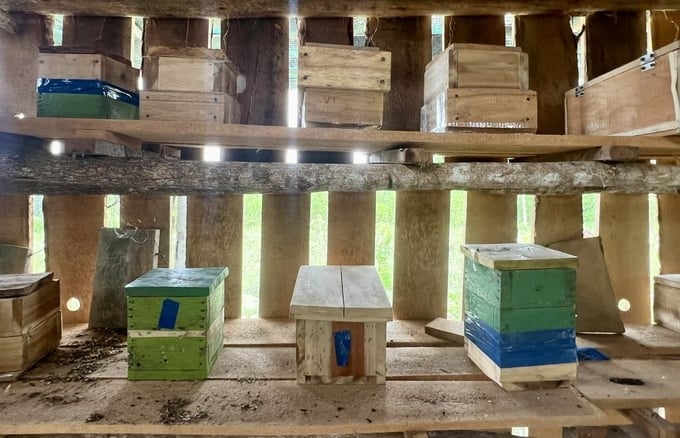
Currently, Mr. Khuong has 400 stingless bee farming hives. Photo: KS.
With the successes achieved from the stingless bee colony, in early 2024, he continued to register to participate in the local OCOP program. He is now completing the documents to be considered for 3-star OCOP recognition.
Mr. Nguyen Duc Thi, Chairman of the Xuan Quang 2 Commune People's Committee, said that Mr. Nguyen Van Khuong's model of raising stingless bees is a new direction that opens up economic development potential for farmers. For a long time, the majority of people in the commune have mainly developed models of growing cassava, sugarcane, raising cows, and planting forests, but there are not many other agricultural models. Therefore, the local government hopes that the model of raising stingless bees will be replicated, contributing to increasing people's income.
According to the Phu Yen Department of Industry and Trade, the stingless bee honey product is favored by people, so the Department will create conditions to promote the product through display activities at trade and industrial fairs so that the product can reach a large number of consumers.
Stingless bee (Meliponini) also has a queen bee like other bee species, the special thing is that this species of bee does not leave like Micrapis or Apis Dorsata. When there are many "workers" in the colony, they separate into other swarm and so the number of hives is multiplied.
Translated by Thu Huyen
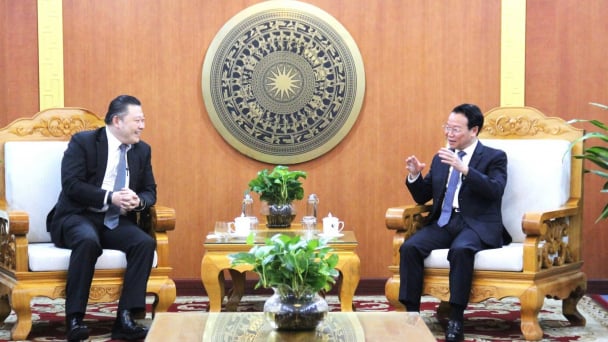
(VAN) Minister of Agriculture and Environment Do Duc Duy held a meeting with Soopakij Chearavanont, Chairman of C.P. Group, on May 15.
/2025/05/16/3800-0-nongnghiep-143756.jpg)
(VAN) Suntory PepsiCo Vietnam coordinated with the Ministry of Education and Training to implement an education program on water conservation, reaching nearly 1 million primary school students nationwide.
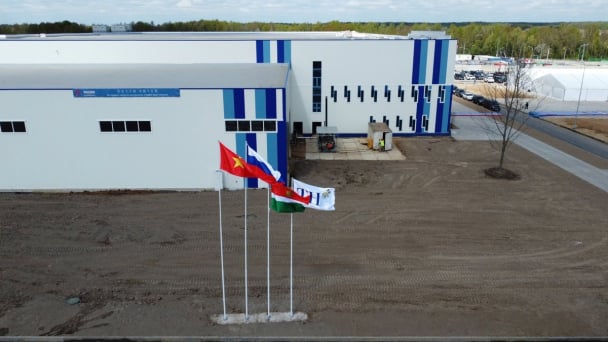
(VAN) Vietnam’s TH Group officially put its high-tech fresh milk processing plant into operation in the Russian Federation, marking a historic moment as the first TH true MILK cartons were produced in Russia.
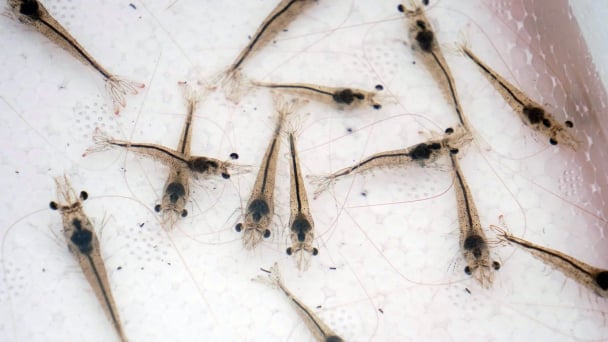
(VAN) Use of high-quality broodstock and biotechnology is regarded as the most effective approach to ensuring sustainable and economically viable shrimp aquaculture ahead of climate change and the emergence of increasingly intricate disease patterns.
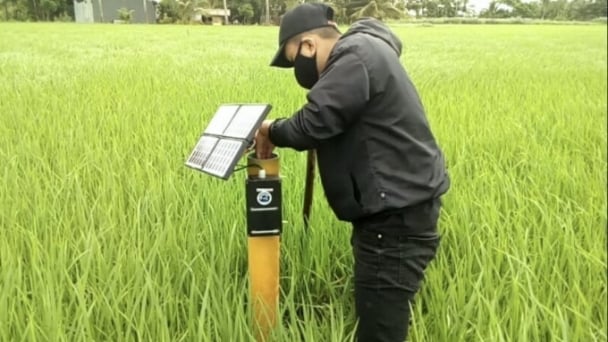
(VAN) Carbon farming is a form of agricultural practices that helps absorb more greenhouse gases than it emits, through smart management of soil, crops, and livestock.
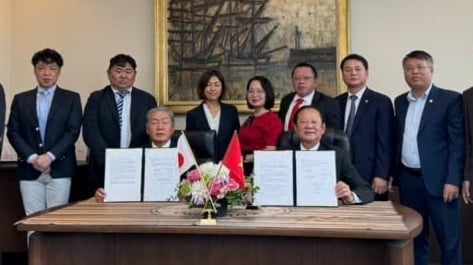
(VAN) This is a key content of the Memorandum of Understanding recently signed between the Vietnam Fisheries Society and Kunihiro Inc of Japan.
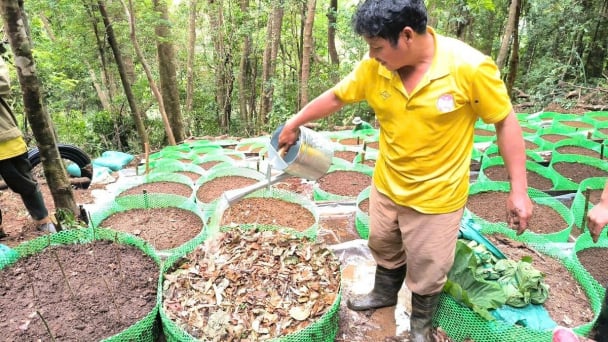
(VAN) To achieve the goal, local authorities and businesses in Kon Tum province have fully prepared the necessary conditions for the new Ngoc Linh ginseng planting season.